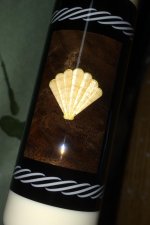He can not post to the forum yet but here is his answer he posted on Facebook.
I had a question about this on AZBilliards.com and am unable to answer due to being a new member on their forum and haven’t been approved yet. Here is the question followed by my answer.
More information would be helpful. You reference a demonstration- is there a link or video?
How is it different than the edge finder built it into Mach3?
Is this a VB script?
Yes, my software creates VB script that is customized to the touch plates you actually use, and it is much more involved than script that is typically assigned to the Auto Tool Zero Button in Mach3. With Cue Zero, you will have the ability to load data for as many as 4 touch plates. That way you can keep the touch plate used on a specific project with that project until completed. This is not required but will assure absolute accuracy when repeatability is a priority.
The Offset Page in Mach3 is much more time consuming and relies on old school methods of setting Zero locations for X Y and Z axis. Each has to be done individually and is subject to errors even though they may be small.
With the Cue Zero Touch Plate, the process requires almost no calculations on the part of the user and once you have your measurements of the touch plate(s) fine tuned to match your machine, you can achieve a repeatable zero point that is as precise as your machine allows. If you machine is accurate to .0005 then your X Y Z axis will zero with repeatability to .0005. This will enable you to start work on a project, quit for the day, restart your machine and re-zero with the same touch plate. Your X Y Z zero will be exactly as it was the day before. This can also come in handy in the event of a power failure. When carving ultra detailed projects this is the only way to truly keep everything lined up as it was at the beginning. When changing bits, you can completely re-zero or just zero the Z axis.
You can also remove your project from your machine and put it on a shelf to work on later. When you are ready to resume, just remount the piece and zero it with the same touch plate. The only requirement is that the work piece must be aligned with the X and Y axis (not rotated) as it was in the beginning. However, it doesn’t have to be in the same location on the machine, just aligned the same.
Some people like to set their zero point to some location other than the left front corner. This can make the design process easier. For that reason I have incorporated offsets into the zeroing script. Simply click the button in the script to enter offsets and answer the questions regarding the distance along the X axis and Y axis you want the offset to be located and proceed as normal.
High precision zeroing has now been incorporated into the zeroing script. When selected, the script will probe the touch plate to find out where the bit is in relation to it. Then move to an exact location for probing the X Y and Z axis. This will give you the absolute same zero point on your material every time. Now that’s repeatability on steroids.
To further simplify the zeroing process, I make use of dialogues within the script. Rather than type values and answer yes or no questions, I have added buttons for common tasks and questions. This includes buttons for selecting bit diameters of 1/8 inch, 1/4 inch and 3/4 inch. There is also a input box on the same dialogue for entering a custom size bit. The bit diameters refer to the diameter of the largest portion of the bit which is typically the shank until you get into larger sizes. You also have the ability to zero with V bit with ease by zeroing to the shank. In some rare cases where you cannot zero to the shank and are left with trying to zero to a beveled area of a bit, then you can insert a different bit and zero all three axis, switch to the desired bit and zero just thee Z axis and your all set.
Setup is very easy if you already are setup for probing. My kit contains one Touch Plate, 6 feet of 16/2awg wire with a banana plug already soldered on one end, a magnetic ground using a N52 rare earth magnet to hold securely, soldered on the ground wire, and a data disk with instructions and the Cue Zero Software.
If you have any questions please don’t hesitate to give me a shout or email me at
charleyntexas@gmail.com
Sent from my SAMSUNG-SM-G935A using Tapatalk




